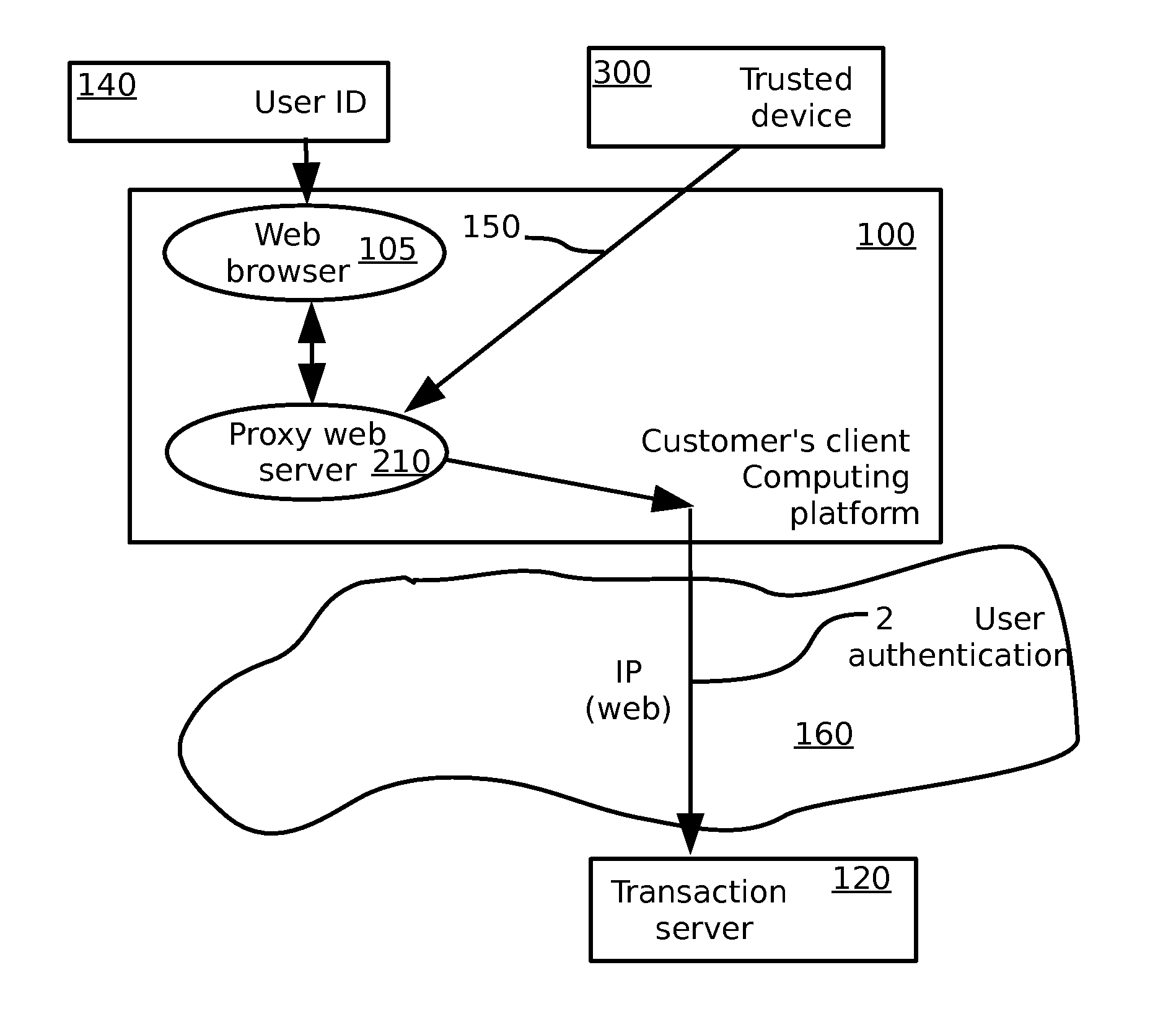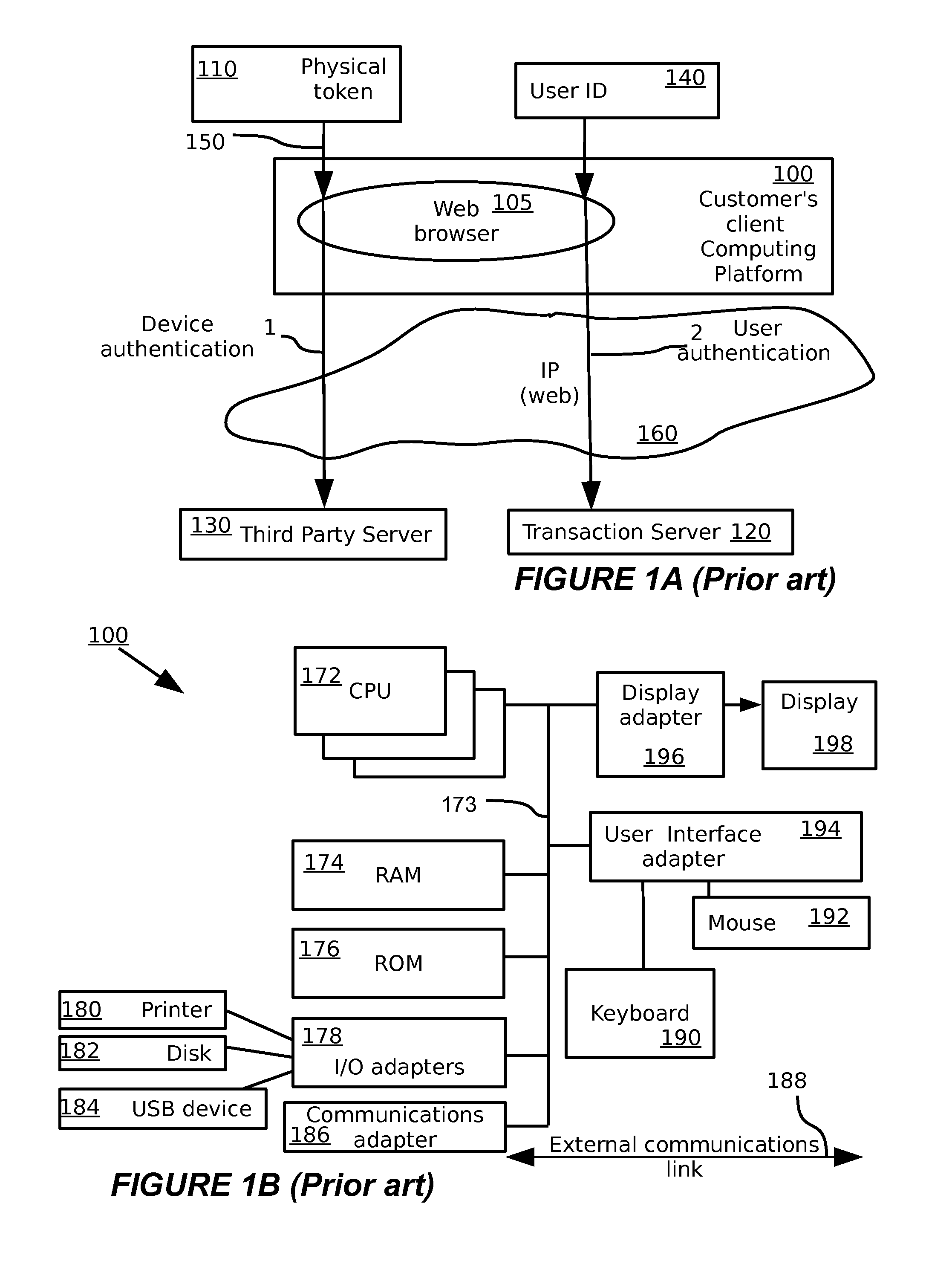Method and system for securing electronic transactions
a technology for electronic transactions and electronic transactions, applied in the field of network security systems, can solve the problems of serious challenges and risks to institutions and their customers, financial institutions in particular can be exposed to significant financial loss, and reputation loss, and achieve the effect of avoiding or reducing shortcomings
- Summary
- Abstract
- Description
- Claims
- Application Information
AI Technical Summary
Benefits of technology
Problems solved by technology
Method used
Image
Examples
Embodiment Construction
[0089]All trademarks herein are property of their respective owners.
[0090]Throughout the following description the use of Transport Layer Security (TLS) and its predecessor, Secure Sockets Layer (SSL), or equivalent capabilities, is assumed. These are cryptographic-based protocols that provide for secure communications on the Internet for web browsing and other forms of data transfer. Those of ordinary skill in the art will appreciate that embodiments of the invention may make use of these (or equivalent) secure communication protocols, although they are not necessary in understanding the invention. Their detailed operation is therefore omitted.
[0091]In the following description, some messages between elements of the system, for example, between servers and customers computers pertaining to the request for and display of web pages, are omitted in the interests of clarity.
[0092]The present invention may be embodied in a variety of computer hardware and software configurations. The te...
PUM
 Login to View More
Login to View More Abstract
Description
Claims
Application Information
 Login to View More
Login to View More - R&D
- Intellectual Property
- Life Sciences
- Materials
- Tech Scout
- Unparalleled Data Quality
- Higher Quality Content
- 60% Fewer Hallucinations
Browse by: Latest US Patents, China's latest patents, Technical Efficacy Thesaurus, Application Domain, Technology Topic, Popular Technical Reports.
© 2025 PatSnap. All rights reserved.Legal|Privacy policy|Modern Slavery Act Transparency Statement|Sitemap|About US| Contact US: help@patsnap.com



